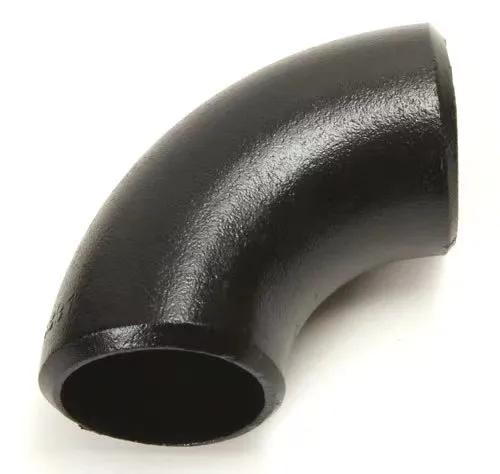-
Cangzhou Yulong Steel Co., Ltd.
-
Phone:
+86 13303177267 -
Email:
admin@ylsteelfittings.com
- English
- Arabic
- Italian
- Spanish
- Portuguese
- German
- kazakh
- Persian
- Greek
- French
- Russian
- Polish
- Thai
- Indonesian
- Vietnamese
- Zulu
- Korean
- Uzbek
- Hindi
- Serbian
- Malay
- Ukrainian
- Gujarati
- Haitian Creole
- hausa
- hawaiian
- Hebrew
- Miao
- Hungarian
- Icelandic
- igbo
- irish
- Japanese
- Javanese
- Kannada
- Khmer
- Rwandese
- Afrikaans
- Albanian
- Amharic
- Armenian
- Azerbaijani
- Basque
- Belarusian
- Bengali
- Bosnian
- Bulgarian
- Catalan
- Cebuano
- China
- China (Taiwan)
- Corsican
- Croatian
- Czech
- Danish
- Esperanto
- Estonian
- Finnish
- Frisian
- Galician
- Georgian
- Kurdish
- Kyrgyz
- Lao
- Latin
- Latvian
- Lithuanian
- Luxembourgish
- Macedonian
- Malgashi
- Malayalam
- Maltese
- Maori
- Marathi
- Mongolian
- Myanmar
- Nepali
- Norwegian
- Norwegian
- Occitan
- Pashto
- Dutch
- Punjabi
- Romanian
- Samoan
- Scottish Gaelic
- Sesotho
- Shona
- Sindhi
- Sinhala
- Slovak
- Slovenian
- Somali
- Sundanese
- Swahili
- Swedish
- Tagalog
- Tajik
- Tamil
- Tatar
- Telugu
- Turkish
- Turkmen
- Urdu
- Uighur
- Welsh
- Bantu
- Yiddish
- Yoruba

Nov . 10, 2024 00:19 Back to list
Understanding Class 150 Slip-On Flanges for Piping Applications and Installation Methods
Understanding Slip-On Flanges Class 150 An Overview
In the realm of piping systems, flanges play a pivotal role in providing a strong and secure connection between two sections of pipe or between pipe and equipment. Among the various types of flanges available in the market, slip-on flanges have gained considerable popularity due to their ease of use and adaptability. In this article, we will delve into slip-on flanges, specifically focusing on Class 150, exploring their features, applications, and benefits.
What is a Slip-On Flange?
A slip-on flange is a type of flange that is designed to fit over the end of a pipe. This type of flange is typically thicker than a weld neck flange and is one of the most straightforward types of flanges available. The slip-on design allows for easy alignment during installation since the flange can simply slide onto the pipe before being welded in place. This feature is particularly advantageous in environments where precision alignment is crucial.
Class 150 Rating Explained
The Class rating of a flange, such as Class 150, indicates the pressure-temperature rating of that flange. Class 150 flanges are rated to handle certain pressure levels and temperatures based on standards set by organizations like ANSI (American National Standards Institute) and ASME (American Society of Mechanical Engineers).
For Class 150 flanges, the rating typically allows for a maximum working pressure of about 150 psi at elevated temperatures. However, this pressure rating can vary based on the material of the flange, the temperature at which it operates, and the specific application. It's essential to consult detailed specifications to ensure that the flange can effectively meet the operational requirements of your specific piping system.
Materials Used
Slip-on flanges, including those classified as Class 150, are available in various materials. Common materials include carbon steel, stainless steel, and alloy steels. Each material offers distinct advantages. For example, stainless steel slip-on flanges are renowned for their resistance to corrosion, making them ideal for applications in corrosive environments. In contrast, carbon steel flanges provide high strength and durability, making them suitable for high-pressure applications.
Applications of Class 150 Slip-On Flanges
slip on flanges class 150

Class 150 slip-on flanges find use in numerous industries and applications
. Their versatility makes them suitable for1. Water Systems Class 150 slip-on flanges are widely used in water pipelines due to their capability to handle non-complex media and create secure connections. 2. Oil and Gas In the oil and gas industry, these flanges facilitate the joining of pipes used to transport crude oil, natural gas, and other related products, ensuring safety and efficiency.
3. Chemical Processing The ability of Class 150 slip-on flanges to resist corrosion makes them vital in chemical processing plants where various chemicals are transported and processed.
4. HVAC Systems Heating, ventilation, and air conditioning systems utilize slip-on flanges for connecting ducts and pipes, contributing to the overall efficiency of the system.
Benefits of Using Class 150 Slip-On Flanges
The advantages of choosing Class 150 slip-on flanges are numerous
- Ease of Installation The simple design allows for quick and straightforward installation, helping to save time and labor costs on a project. - Alignment Flexibility The slip-on capability permits greater alignment flexibility, reducing the likelihood of misalignment during assembly. - Cost-Effectiveness Generally, slip-on flanges tend to be less expensive than other flange types, such as weld neck flanges. - Versatility Their suitability for various applications makes them a go-to choice in many industrial sectors, making them a staple in the piping inventory.
Conclusion
Slip-on flanges Class 150 embody a balance of efficiency, affordability, and reliability in piping systems. Their design supports easy installation, adaptability to varying conditions, and compatibility with a range of materials. By understanding these attributes, engineers and technicians can make informed decisions when selecting the appropriate flange type for their specific applications. Analysing the needs of a project and considering the benefits of Class 150 slip-on flanges can lead to more effective and sustainable piping systems. Whether in oil and gas, water management, or chemical processing, the importance of these components in ensuring the integrity and success of a project cannot be overstated.
Latest news
-
ANSI 150P SS304 SO FLANGE
NewsFeb.14,2025
-
ASTM A333GR6 STEEL PIPE
NewsJan.20,2025
-
ANSI B16.5 WELDING NECK FLANGE
NewsJan.15,2026
-
ANSI B16.5 SLIP-ON FLANGE
NewsApr.19,2024
-
SABS 1123 FLANGE
NewsJan.15,2025
-
DIN86044 PLATE FLANGE
NewsApr.19,2024
-
DIN2527 BLIND FLANGE
NewsApr.12,2024
-
JIS B2311 Butt-Welding Fittings LR/SR 45°/90° /180°Seamless/Weld
NewsApr.23,2024











